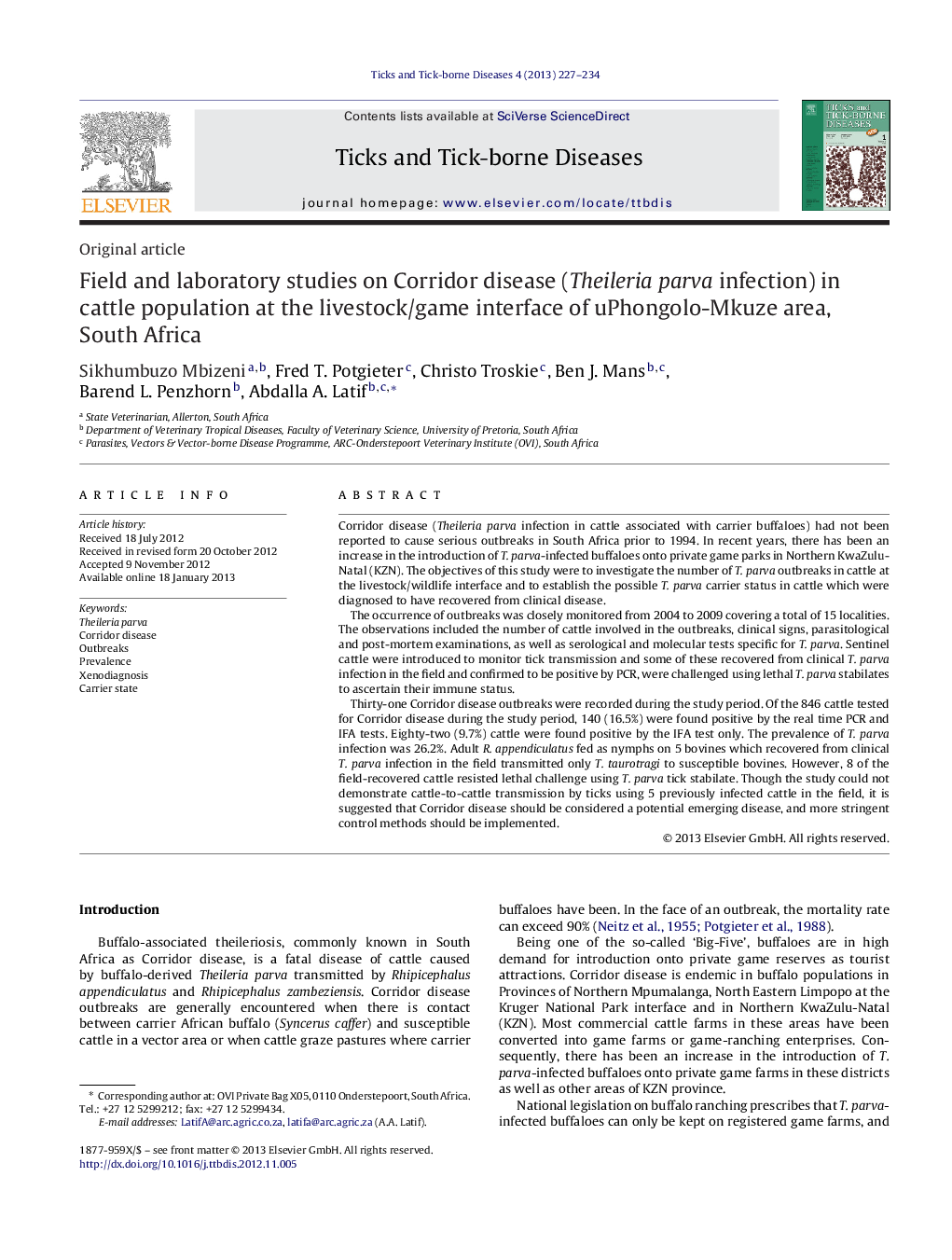| Article ID | Journal | Published Year | Pages | File Type |
|---|---|---|---|---|
| 2474172 | Ticks and Tick-borne Diseases | 2013 | 8 Pages |
Corridor disease (Theileria parva infection in cattle associated with carrier buffaloes) had not been reported to cause serious outbreaks in South Africa prior to 1994. In recent years, there has been an increase in the introduction of T. parva-infected buffaloes onto private game parks in Northern KwaZulu-Natal (KZN). The objectives of this study were to investigate the number of T. parva outbreaks in cattle at the livestock/wildlife interface and to establish the possible T. parva carrier status in cattle which were diagnosed to have recovered from clinical disease.The occurrence of outbreaks was closely monitored from 2004 to 2009 covering a total of 15 localities. The observations included the number of cattle involved in the outbreaks, clinical signs, parasitological and post-mortem examinations, as well as serological and molecular tests specific for T. parva. Sentinel cattle were introduced to monitor tick transmission and some of these recovered from clinical T. parva infection in the field and confirmed to be positive by PCR, were challenged using lethal T. parva stabilates to ascertain their immune status.Thirty-one Corridor disease outbreaks were recorded during the study period. Of the 846 cattle tested for Corridor disease during the study period, 140 (16.5%) were found positive by the real time PCR and IFA tests. Eighty-two (9.7%) cattle were found positive by the IFA test only. The prevalence of T. parva infection was 26.2%. Adult R. appendiculatus fed as nymphs on 5 bovines which recovered from clinical T. parva infection in the field transmitted only T. taurotragi to susceptible bovines. However, 8 of the field-recovered cattle resisted lethal challenge using T. parva tick stabilate. Though the study could not demonstrate cattle-to-cattle transmission by ticks using 5 previously infected cattle in the field, it is suggested that Corridor disease should be considered a potential emerging disease, and more stringent control methods should be implemented.
